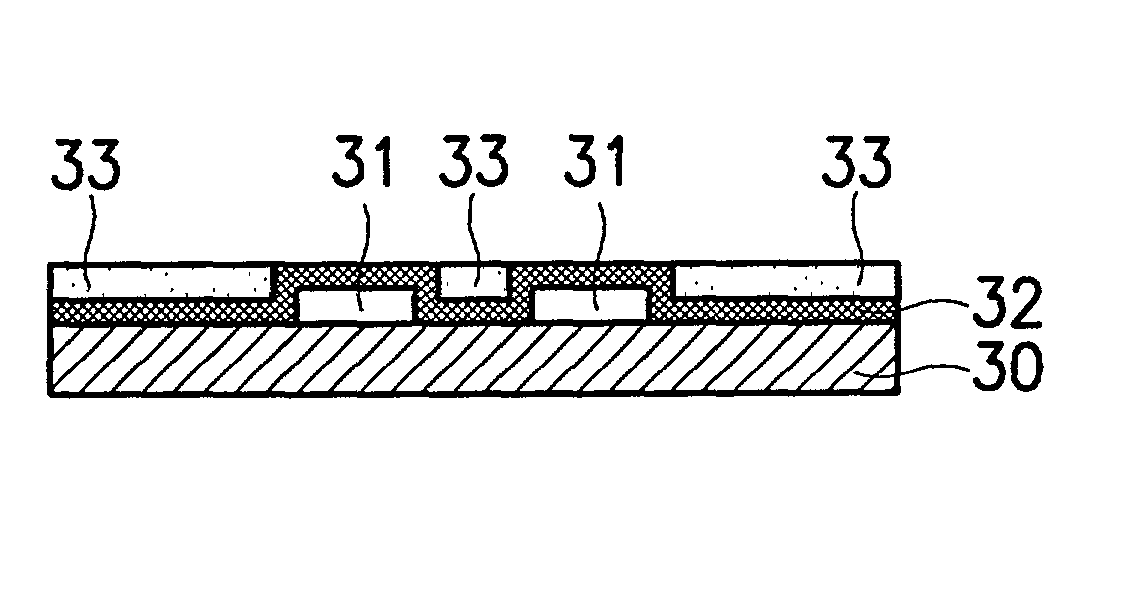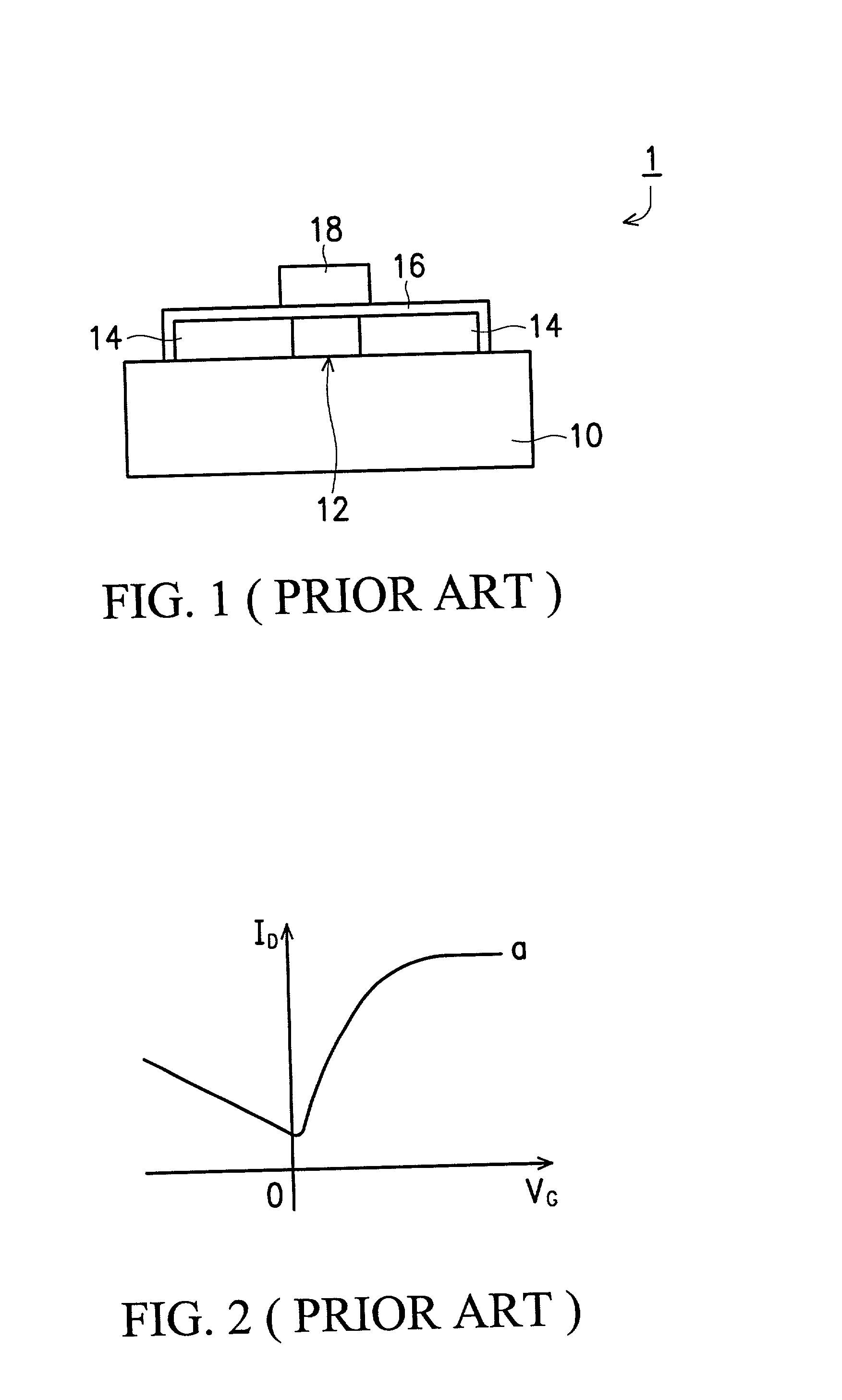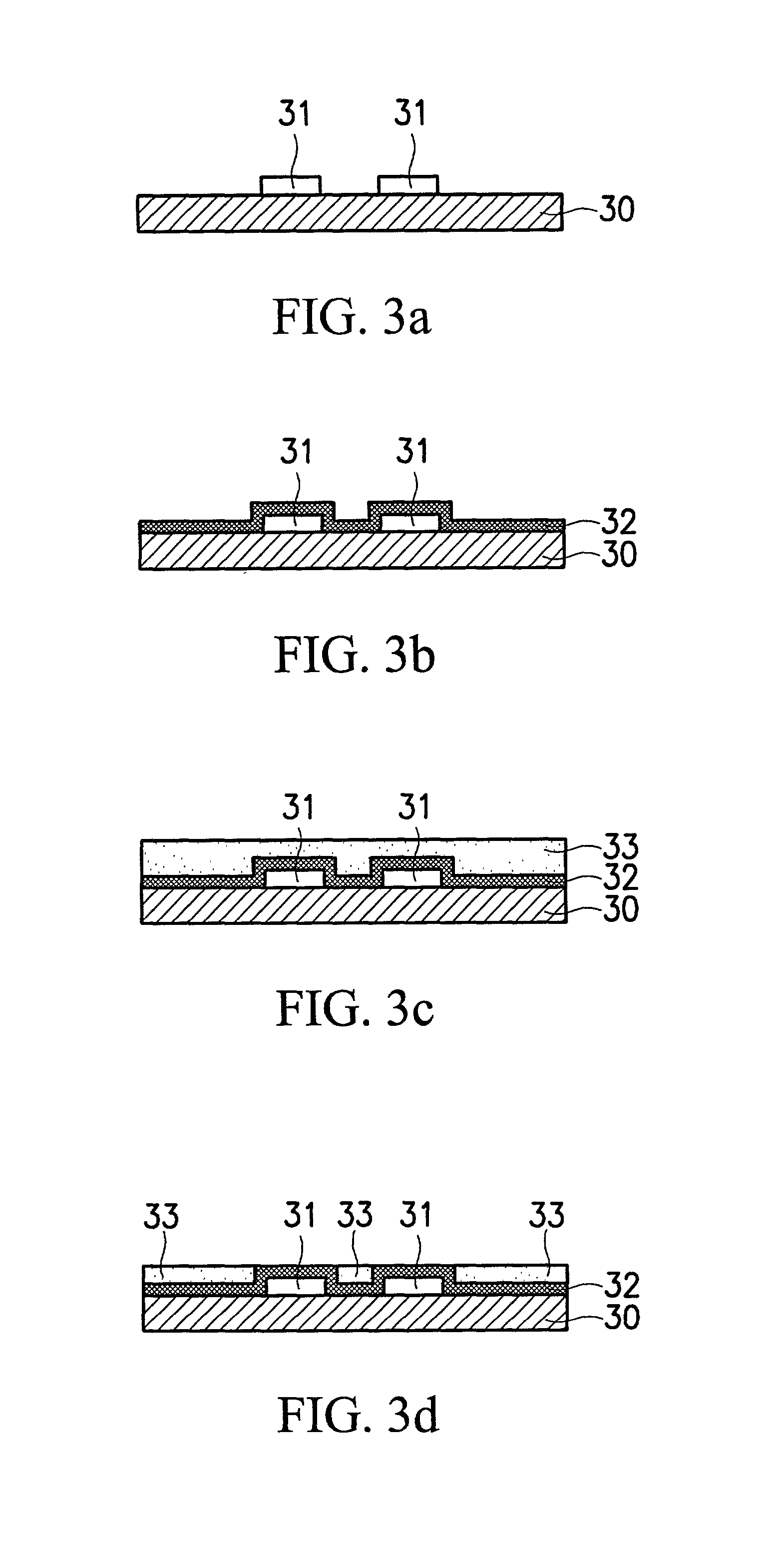Thin film transistor with sub-gates and schottky source/drain and a manufacturing method of the same
a technology manufacturing methods, applied in the field of thin film transistors, can solve the problems of not being able to operate in bi-channel mode, not being able to advantageously lower the process temperature, etc., and achieve the effects of reducing process complexity and cost, lowering process temperature, and reducing off-state leakag
- Summary
- Abstract
- Description
- Claims
- Application Information
AI Technical Summary
Benefits of technology
Problems solved by technology
Method used
Image
Examples
first embodiment
[0040] Refer to FIGS. 3a.about.3i, which illustrate the cross-sectional diagrams of the process according to the invention.
[0041] First, an insulation substrate 30 is provided; it is SiO.sub.2 or quartz. A first conductive layer is then formed on the insulation substrate 30. The first conductive layer is then defined and etched by lithography shown in FIG. 3a, to form two island-shaped sub-gate layers 31 on the insulation substrate 30. The first conductive layer is of a material selected from metal or highly doped polysilicon. The thickness is 30.about.200 nm.
[0042] A first insulation layer 32 is conformally formed on the island-shaped sub-gate layers 31 and the insulation substrate 30, shown in FIG. 3b. The first insulator 32 is silicon nitride layer formed by CVD with a thickness from 30 to 200 nm.
[0043] A second insulation layer 33 is formed on the first insulation layer 32, followed by chemical mechanical polishing (CMP) to planarize the surface, shown in FIG. 3c. The second ins...
fourth embodiment
[0066] Refer to FIGS. 6a.about.6h, which illustrate the cross-sectional diagrams of the process of fourth embodiment in this invention.
[0067] First, an insulation substrate 60, of, for example, SiO2 or quartz, is provided. Next, a thin semiconductor layer is formed on the insulation substrate 60. The semiconductor layer is then defined and etched to form an island-shaped semiconductor layer 61 on the insulation substrate, shown in FIG. 6a. The thickness of the thin semiconductor is between 10 and 200 nm. The material is selected from single silicon, amorphous silicon or polysilicon.
[0068] A first insulation layer 62, a first conductive layer 63 and a second insulation layer 64 are sequentially formed on the island-shaped semiconductor 61 and the insulation substrate 60, shown in FIG. 6b. The first insulation layer 62 is a silicon nitride layer formed by CVD with a thickness between 10 and 100 nm. The first conductive layer 63 is selected from a metal layer or highly doped polysilico...
sixth embodiment
[0084] Refer to FIGS. 8a.about.8g, which illustrate the cross-sectional diagrams of the process of sixth embodiment in this invention.
[0085] First, an insulation substrate 80, of, for example, SiO2 or quartz is provided. Next, a thin semiconductor layer is formed on the insulation substrate 80. The semiconductor layer is then defined and etched to form an island-shaped semiconductor layer 81 on the insulation substrate, shown in FIG. 8a. The thickness of the thin semiconductor layer is between 10 and 200 nm. The material is selected from single silicon, amorphous silicon or polysilicon.
[0086] A gate dielectric layer 82 is formed on the surface of the island-shaped semiconductor 81 by thermal oxidation or CVD, shown in FIG. 8b. The gate dielectric layer 82 is oxide layer in this embodiment.
[0087] Next, a first conductive layer is formed on the gate dielectric layer 82, which is then etched by lithography to an island-shaped main gate 83, shown in FIG. 8c. The first conductive layer i...
PUM
 Login to View More
Login to View More Abstract
Description
Claims
Application Information
 Login to View More
Login to View More - R&D
- Intellectual Property
- Life Sciences
- Materials
- Tech Scout
- Unparalleled Data Quality
- Higher Quality Content
- 60% Fewer Hallucinations
Browse by: Latest US Patents, China's latest patents, Technical Efficacy Thesaurus, Application Domain, Technology Topic, Popular Technical Reports.
© 2025 PatSnap. All rights reserved.Legal|Privacy policy|Modern Slavery Act Transparency Statement|Sitemap|About US| Contact US: help@patsnap.com



